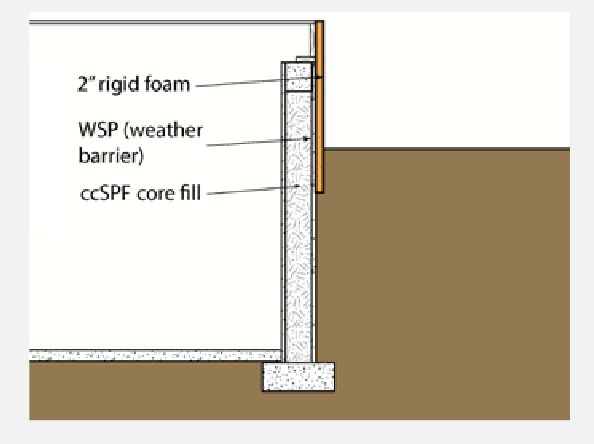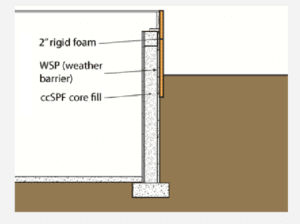
Foundation Insulation Retrofit: Applying Reclaimed XPS for Thermal Protection
Foundation insulation is a crucial component of energy-efficient construction and retrofitting. It helps prevent heat loss, moisture intrusion, and related issues, ensuring a more comfortable and sustainable building environment. Reclaimed Extruded Polystyrene (XPS) foam boards stand out as an ideal choice for insulating foundations, offering a combination of durability, moisture resistance, and cost-effectiveness.
Green Insulation, a trusted supplier in the New England area, specializes in reclaimed XPS and other rigid foam insulation materials, providing sustainable and affordable solutions for your foundation retrofit needs. Contact us today to explore our offerings!
Why XPS is Ideal for Foundation Insulation
XPS foam boards are engineered to perform exceptionally well in below-grade applications. Their closed-cell structure gives them outstanding moisture resistance, preventing water from seeping into the insulation and compromising its performance. Additionally, XPS offers high compressive strength, making it capable of withstanding soil pressure and the rigors of underground installation.
Another key advantage of XPS is its consistent R-value, which provides reliable thermal insulation over time. Unlike some insulation materials that degrade in performance, XPS maintains its insulating properties, ensuring long-term energy efficiency. When reclaimed XPS is used, it further adds to the sustainability of the project by reducing waste and minimizing the need for new manufacturing, lowering the project’s environmental footprint.
Techniques for Insulating Foundations with Reclaimed XPS
Exterior Foundation Insulation
For most projects, insulating the exterior of a foundation requires minimal excavation—just about one foot below grade. This shallow excavation simplifies the process while providing the necessary access to install insulation panels effectively. Before applying the XPS panels, a waterproofing membrane should be applied to the foundation wall to prevent moisture from penetrating into the building.

Schematic of foundation insulation retrofit (source: Department of Energy)
To attach the XPS boards, use construction adhesives designed for foam insulation or mechanical fasteners to ensure a secure fit. Once the panels are in place, the portion of the insulation that extends above grade must be protected. A cementitious coating, metal cladding, or even UV-resistant paint can shield the insulation from physical damage and exposure to sunlight, extending its lifespan and maintaining its effectiveness.
Interior Foundation Insulation
In situations where exterior excavation is impractical, interior foundation insulation offers a viable alternative. In this method, XPS boards are installed directly onto the interior foundation walls. Care must be taken to create a continuous insulation layer by sealing all joints and edges with spray foam or insulation tape. This not only enhances thermal performance but also prevents air leakage and moisture accumulation.
The case study only looked at exterior application of XPS. Consult with code inspectors and experienced contractors so you don’t create moisture management issues.
Addressing Moisture Management and Achieving R-10 Performance
Moisture management is a top priority for foundation insulation. XPS excels in this area due to its closed-cell structure, which resists water infiltration and reduces the risk of mold and mildew. However, combining XPS with proper drainage systems around the foundation further enhances its performance, directing water away from the structure and minimizing long-term risks.
To achieve an R-10 insulation value, approximately 2 inches of XPS foam is required, as XPS typically provides an R-value of 5 per inch. This thickness is sufficient to meet or exceed energy code requirements in most regions, providing a significant boost to the building’s energy efficiency.
NOTE: code compliance is critical for optimum insulation use and moisture management.
Case Studies and Resources
Reclaimed XPS has proven its value in numerous projects. For example, the Department of Energy’s “Innovative Retrofit Foundation Insulation Strategies” outlines practical methods for insulating foundations with rigid foam boards, demonstrating their effectiveness in reducing heat loss and improving moisture control. (Department of Energy case study).
In the Department of Energy case study, the “ccSPF core fill combined with R-10 exterior rigid foam installed to 1 ft below grade reduced basement heat loss by 27% and saved 8.8% in site energy use.”
Additional resources on XPS insulation for foundation retrofits are available from industry leaders and organizations focused on energy-efficient building practices. These examples highlight the cost savings and performance benefits of using reclaimed XPS.
- Lancaster, MA – 19th Century Small Colonial Second Floor Reframing Comprehensive Deep Energy Retrofit – Case Study
- Department of Energy (Oak Ridge) Excavationless Exterior Foundation Insulation Exploratory Study
- Department of Energy (Golden CO) Excavationless Exterior Foundation Insulation Exploratory Study
- Lawrence Berkeley National Lab 10 Deep Retrofit Case Studies (P1, P2, P4, P6)
- Department of Energy (Oak Ridge) Innovative Retrofit Insulation Strategies for Concrete Masonry Foundations Study
Reclaimed XPS foam boards are an exceptional choice for foundation insulation, offering superior moisture resistance, compressive strength, and thermal performance. Their use ensures energy efficiency, sustainability, and affordability for both new construction and retrofit projects. By minimizing excavation to just one foot below grade and protecting the above-grade portions with durable coatings, reclaimed XPS becomes a practical and high-performing solution for foundations.
Green Insulation is proud to supply high-quality reclaimed XPS insulation to homeowners and builders in the New England area. Contact us today to learn how our materials can transform your building’s energy efficiency while supporting a sustainable future!
